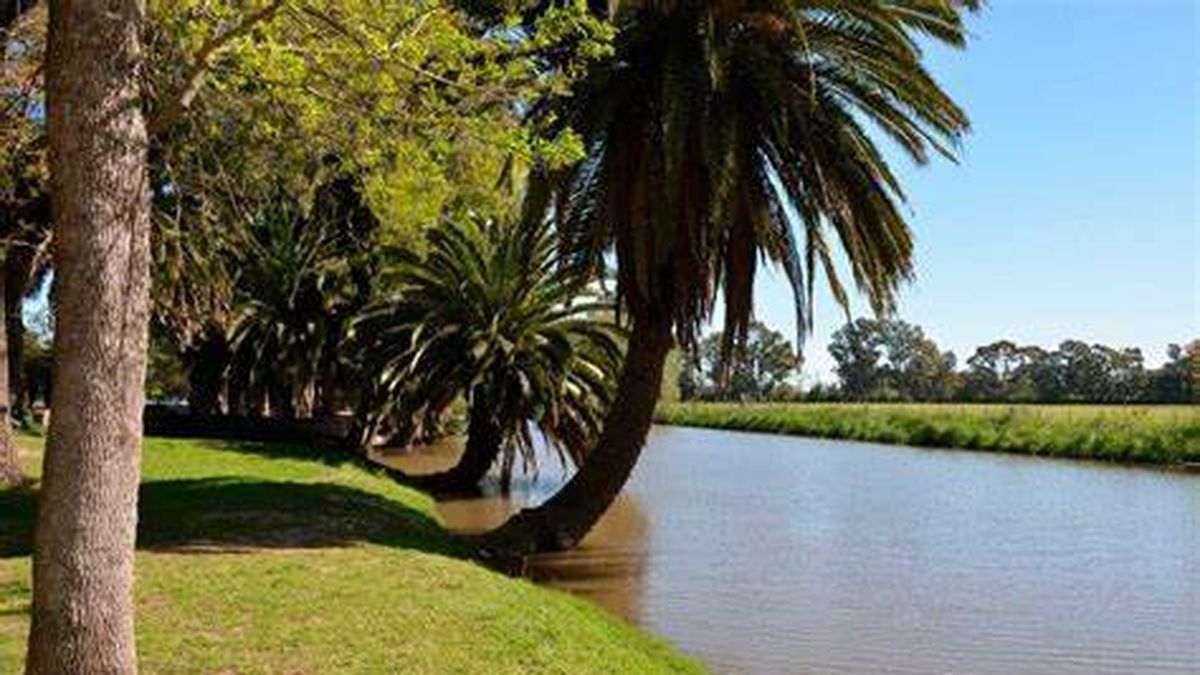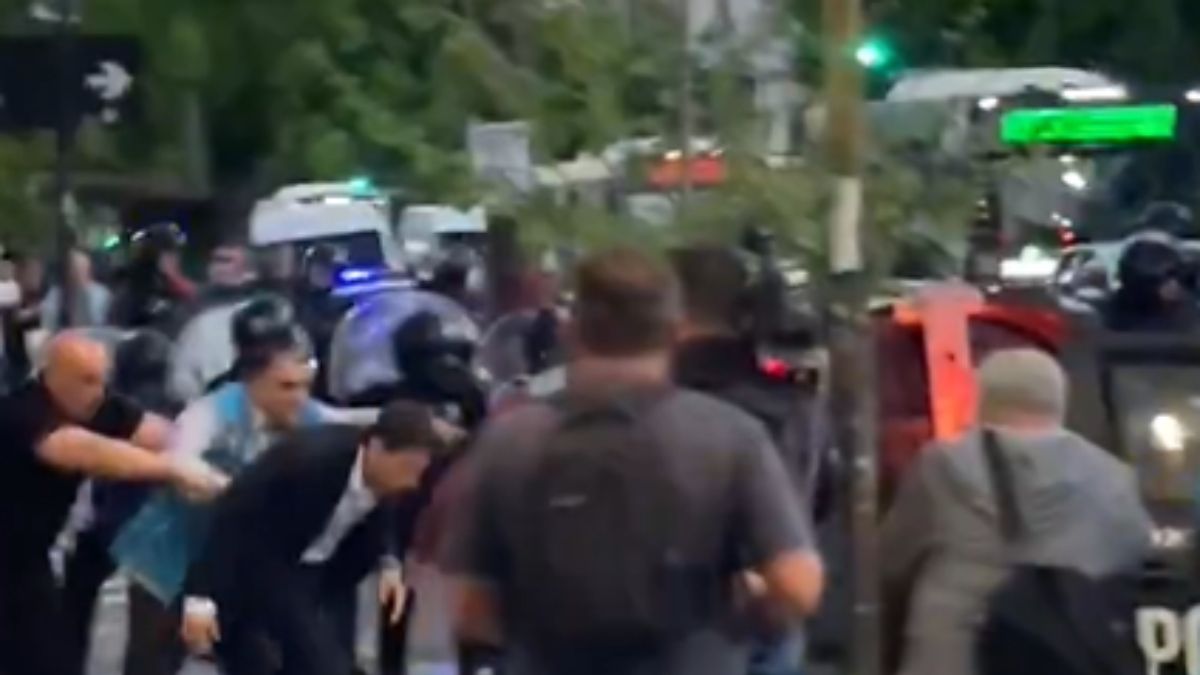Monument to Don Quixote: In 2007, being Named by UNESCO as the “Cervantine City of Argentina”, the town of Azul commissioned a work from the sculptor Carlos Regazzoni.
Symbolizing a meeting of culturesDon Quixote looks almost face to face at the bust that commemorates Chief Cipriano Catriel, located in the Plazoleta de los Pueblos Originarios on the other bank of the Arroyo Azul, chief of the native tribe of these lands and of whom there are many descendants in the city.
Location: Av. Mitre and Av. Costanera Cacique Catriel
City Hall: In front of the Cathedral Church and the central Plaza is the Municipal Palace, Neoclassical building built on the site of the “San Serapio Mártir de Azul” Fort and inaugurated in 1886Its façade was recently restored and its lighting highlights its architectural details. Its most notable element is its Italianate central tower, which has a perimeter balcony and a top finish called a false dome made of wrought iron.
Location: Yrigoyen between Colon and Burgos
Our Lady of the Rosary Cathedral Church: Located in front of the square, the perspective of the large open space enhances its presence. Dates from 1906On the main altar there is an important image of Our Lady of the Rosary, Patron Saint of the city, which was brought in 1863 from Italy. Its location is the same as that of the first chapel of the San Serapio Mártir Fort (Patron Saint of Azul).
Location: between Colon, Burgos, Yrigoyen and San Martin streets.
Spanish Theatre: founded by the The Spanish Association of Mutual Aid of Azul was inaugurated in 1897. and later declared a Historical Monument of the Province of Buenos Aires and a National Historic-Artistic Interest Asset
Built in neoclassical style between 1894 and 1897The building is made up of a foyer, a horseshoe-shaped performance hall with capacity for 500 spectators, a confectionery, a cultural hall for exhibitions and events with capacity for 200 spectators, a secretariat for the Spanish Association and a Vice-Consulate of Spain.
In the entrance hall, photos, programmes and objects that make up the history of this magnificent theatre are displayed. The performance season runs from March to December with renowned plays and casts.
The efforts of a group of residents allowed its restoration and reopening in 1992.
Location: San Martin 427. www.teatroespanol.azul.com.ar
Enrique Squirru Ethnographic Museum and Historical Archive: It is a true jewel of the local architectural heritage. Construction from the year 1854 that belonged to Bernarda Burgos. It is an exponent of the neocolonial style and remains without substantial modifications in its construction.
The “Enrique Squirru” Ethnographic Museum and Historical Archive was founded in 1945 by Dr. Bartolomé J. Ronco with the aim of safeguarding invaluable collections of jewelry from different indigenous cultures.
It exhibits one of the most important nationwide collections of Pampa and Mapuche silverware, of great aesthetic quality. Its rich collection includes pieces of Creole silverware and a display of objects that make up the city and the region. The permanent exhibition is completed by: Pampas textiles, ropework, stone pieces and pre-Columbian ceramics
In addition, it has a pictorial room composed of works by local artistss, named after Claudio Lantier – pseudonym of Alberto López Claro, an important artist from Azul. The highlights of this space are paintings that reflect the daily life of the Pampa Catriel tribe and a watercolor by Martín Malharro (1856-1911) -called “La casita”- a painter who introduced the impressionist style to the Río de la Plata and who was a native of Azul.
The Archive preserves documentary and photographic collections that tell the story of Azul since its founding.
Location: Alvear (Ronco) 654 corner San Martin.
López Claro Municipal Art Museum: It operates in the house that belonged to the Bettinelli-López Claro family, who were deeply connected to art. Its construction dates back to 1906. This art gallery displays the works of Claudio Lantier, pseudonym of the painter Alberto López Claro, as well as the acquisition awards of the National Blue Salon of Drawing and Painting. Opened in 1995, it exhibits valuable works by this pioneer of national surrealism and his son, César López Claro.
Thematic seminars, art-film cycles and cultural itinerary trips are held. In this way, in addition to its historical educational purpose, it also fulfils the objectives of aesthetic education, which is typical of an Art Museum.
Bolivar Walk: Towards the end of the 19th century and the first decades of the 1900s, the axis of significant constructions of Bolívar Street, as we know it today, was outlined. Between Av. 25 de Mayo towards the banks of the Arroyo Azul, there is a concentration of buildings of high historical value where stylistic currents that respond to neoclassicism, neo-Tudor, French and Italian eclecticism stand out, most of them with great ornamental wealth in the treatment of their facades and important ironwork, carpentry, stained glass and majolica works. The designers of these works were, among others, Architects Blas J. Dhers, Julio Maschio, Héctor Pourtale and Roberto Leiva.
On this tour you can see mansions of important architecture, symbols of the prosperous era at the beginning of the 20th century. Continuing along Bolívar Street you will also pass by the Cantoncillo de Santa Margarita, the Cristífero Institute and the Monsignor César Cáneva Library and about 50 meters from this (on Burgos Street) the Bartolomé J. Ronco Popular Library. Continuing along Bolívar Street to Maipú, you will find the Villino de Piazza, a luxurious Italianate mansion and the Universal Cinema.
Location: Bolívar Street, between 25 de Mayo Avenue and Costanera Cacique Catriel Avenue.
Natural Circuit
Mountains of Azul: Taking Provincial Route 80 from National Route 226 you reach the mountains of the Azul District. A wavy and picturesque road leads visitors to this place of interest. declared a Nature Reserve, with geological value since its landscape is made up of very old rocks, more than 2,000 million years old.
In this area, the Parador Municipal stands out, offering tourists a place to enjoy the mountain landscape, rest, have picnics, as well as an interesting interpretation circuit of native flora and fauna.
A few kilometers further on, in the rural area Pablo Acosta, you will find the La Armonia and La Crespa hillsa rest stop where you can rest and appreciate the landscape, a old dam, a granite stone mill, the Estancia Los Ángeles and the Trappist Convent “Our Lady of the Angels”.
The mountains of Azul are an ideal place to practice different activities. adventure tourism (rappelling, ziplining, rock climbing), sports, trekking, walks, mountain biking and cycle tourism.
Cacique Catriel Coastline: The “Cacique Catriel” waterfront is a riverside promenade that follows the natural course of the Arroyo Azul (Callvú Leovú) through the urban area of the city. Along its route there are spaces for rest and recreation.
“Domingo F. Sarmiento” Municipal Park: walk located on the banks of the Blue Creek. It is the most important green lung of the city since it has an old and aged grove. With a surface area of 22 hectares of extension has more than 300 exotic tree species, ornamental shrubs and an important Carrara marble sculpture group, the Andalusian Courtyard, the Poets’ Island and other cultural elements. It also has interior paths with an exceptional harmony between vegetation and water. It was inaugurated in October 1918.
Location: Pellegrini and Guaminí Avenues.
“Almirante Brown” Municipal Spa: constitutes a magnificent Walk with a 6-hectare water mirror. Located on the Arroyo Azul, almost 3 km from the city centerIt was opened in 1940. It has numerous landscaped areas and areas with tables and fireplaces.
In the surroundings of the Spa you can find bars, pubs, restaurants and parking spaces.
Location: Pellegrini and Urioste Avenues.
How to get to Azul, Buenos Aires Province
From the City of Buenos Aires, it is 308 kilometers, which takes 3.30 hours to travel. Take the 25 de Mayo highway, continue along the Ricchieri highway, then along the Autopista al Sur until the exit for the Ezeiza – Cañuelas highway. Once on this highway, continue until the roundabout and take National Route Nº3 towards San Miguel del Monte. Continue on this route until kilometer 299, where you will find the entrance to Azul on Av. Piazza.
Source: Ambito




